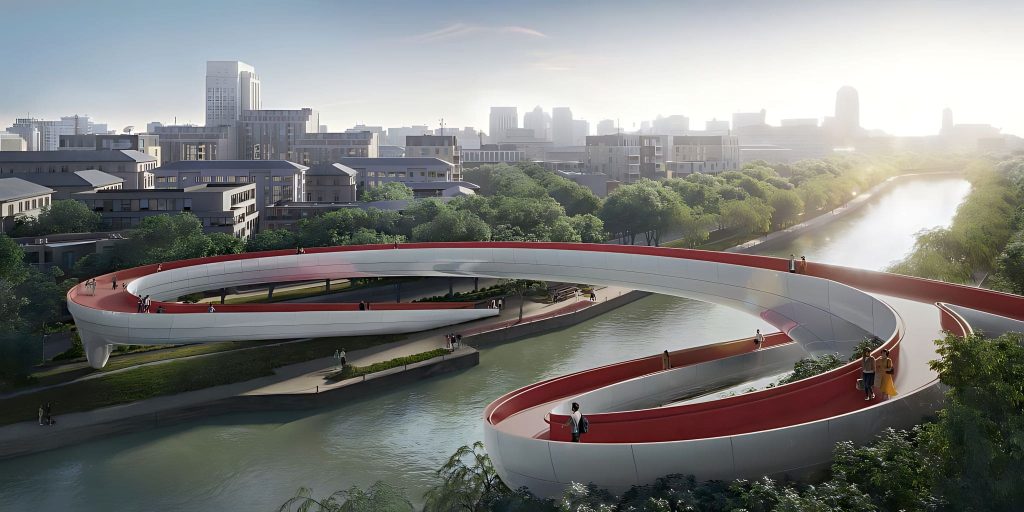Location
Jiaxing, China
Client
Confidential
Sector
Commercial
Size
Scope
Architecture
Status
Confidential
Ancient Chinese literature refers to the Zhaozhou Bridge as a “crescent moon rising from the clouds” or a “rainbow in the sky.” The Zhaozhou Bridge, with a span of 37 metres, is the world’s oldest open-spandrel arch bridge. The bridge remains in use today, and the ornamental posts and railings have had to be replaced every 300 to 500 years.
Located in Jiaxing, in the Zhejiang province, RMJM Milano’s proposal for the footbridge is based on a simple concept: to create a link between the south lake international and the central axis of the ancient city, crossing the Huancheng river and the railway. Integrating the newly designed bridge successfully and harmoniously into the landscape was a foremost concern. The main aspiration was to produce a contemporary yet timeless design. This mix of confidence and harmony is reflected in the rugged landscape and the fragile historical remains.
The bridge is a 300-metre-long, 5-metre-wide sculpture. Due to its undulating shape created from Chinese knots and confined landing space, it is pedestrian-friendly owing to its central axis. Despite its modern approach to design, the contemporary design maintains the tradition. Crossing the bridge is a new experience for visitors, as it shows the city from different angles due to its variable path. Pedestrians and cyclists share the same landing, so there is no disturbance to their regular route.
The bridge is at the height of 15 metres and 8 metres over the railway and the river, respectively. It is made of flexible steel hollow pipe sections and 3D-printed ceramic panels on the outside. The goal was to demonstrate how a responsible approach to design can be used to address challenges facing the engineering, construction, and architecture fields. 3D printing will simplify the process.
It is an efficient process that lets architects innovate designs and work more accurately and efficiently. It is possible to dismantle the blocks and rebuild the bridge at a different location since the structure does not require mortar. Afterwards, the components can be reused or recycled if they are no longer needed. To decrease the site’s footprint, RMJM Milano created a flexible and adjustable steel structure that is easy and fast to install. The bridge’s basic skeleton is a triangular steel truss with pipes and the major axial load will be distributed evenly to a pile foundation. The rectangular steel hollow sections installed on the triangular truss operate as a supplementary component that helps to stabilise the building and provides pedestrian foot support. The external 3D-printed ceramic panels are merged with circular hollow pieces, which in turn are connected to the major and secondary structures.
In addition to preserving the ancient history and culture of historic China, the bridge also meets all the requirements of Zhejiang province’s happy river system. By bringing together the ancient city centre and modern city centre, Jiaxing aims to create a central urban axis, the old city’s main central axis. This axis will incorporate pedestrian streets to connect the past and present. By landing on this bridge, the major urban axis will become more integrated.
This footbridge will improve the quality of life in Jiaxing’s Downtown Area. It will also enhance the image of Jiaxing’s central cultural axis. It will also provide the Jiaxing Section of The Grand Canal with walking, sightseeing, travel, and view appreciation opportunities. By doing so, it will complement the ancient city and its surroundings, while seamlessly integrating modernity and adapting to changes in the future. The proposed footbridge will further enhance the slow traffic system between Jiaxing’s historic town and South Lake by connecting both of them. It will promote the development of urban areas and improve the lives of the citizens.




